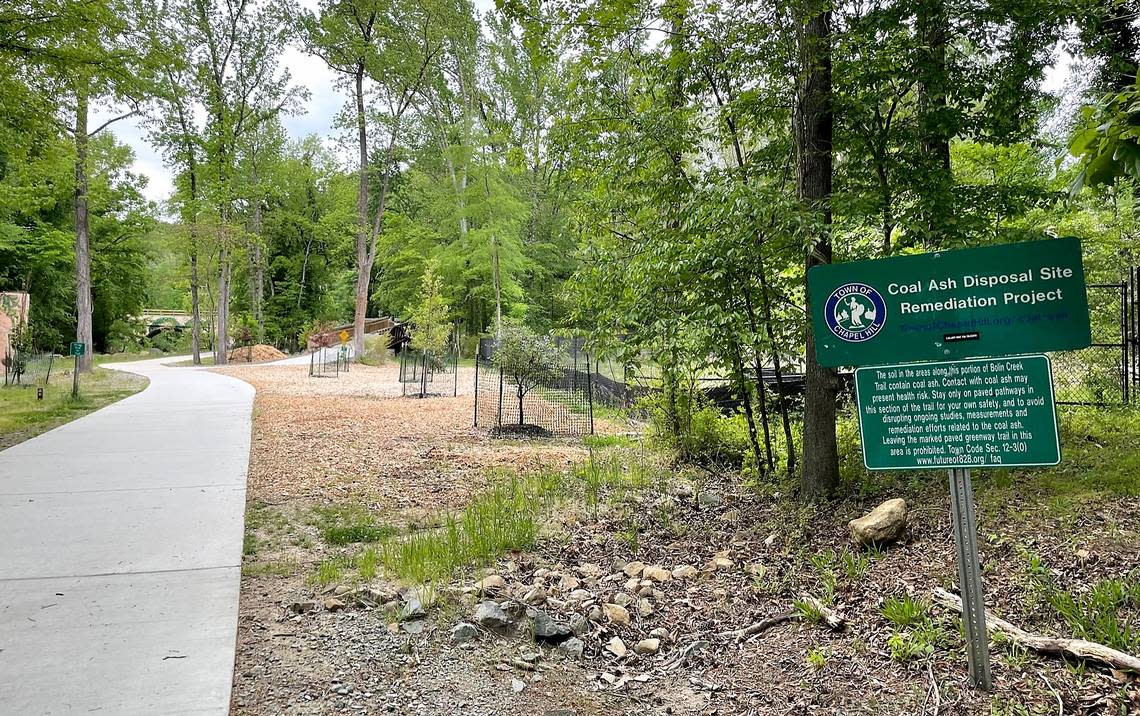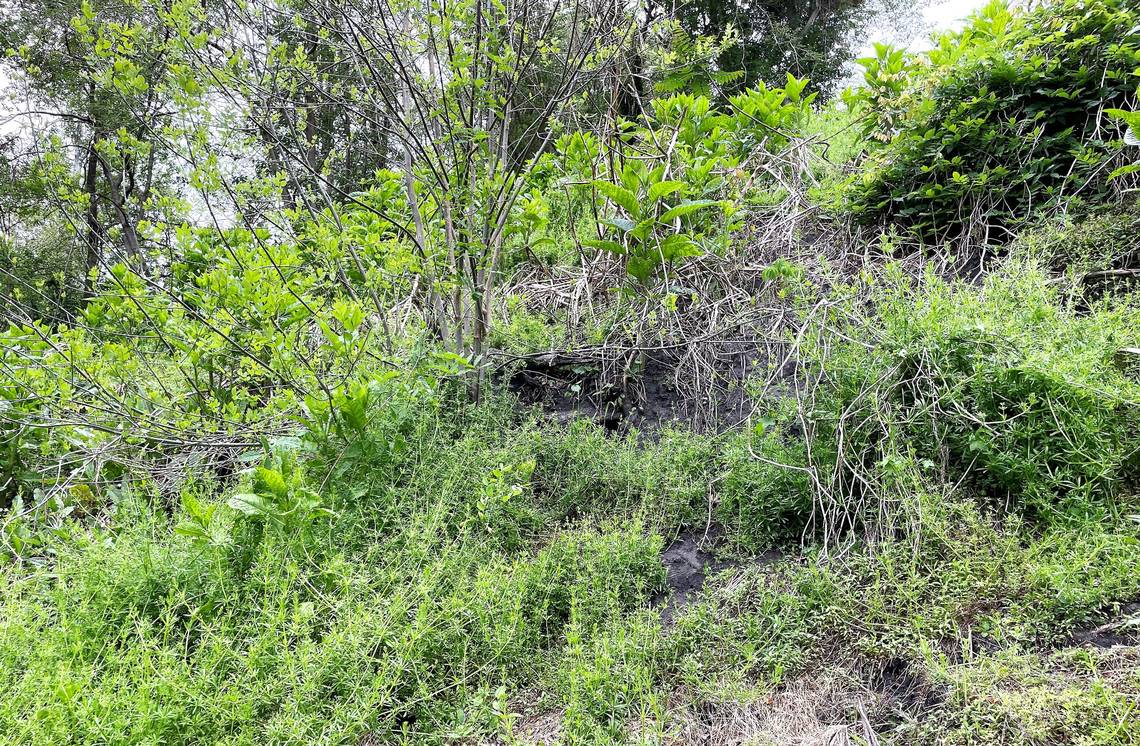Could Chapel Hill have a Superfund site? EPA to study town’s former coal ash dump.
The federal government plans to investigate a Chapel Hill coal ash burial site poised for redevelopment after new studies raised more concerns about the potential health risks.
The U.S. Environmental Protection Agency told the town this week it plans to act on a petition from the nonprofit Center for Biological Diversity about the site at 828 Martin Luther King Jr. Blvd.
The site, which houses the Chapel Hill Police Department, meets federal requirements for a preliminary assessment, to be conducted this year, EPA officials said in a letter. If it meets Superfund guidelines, the EPA would oversee and could provide federal dollars for the work.
The Center for Biological Diversity, Southern Environmental Law Center and local groups, including the Friends of Bolin Creek, have called for all of the coal ash to be removed and the site to be left undeveloped.
SELC officials wrote to the town in January about the “unacceptable health risks” of radioactivity and arsenic from exposure to coal ash deposits. The EPA has been assessing coal ash regulations at power plants and is updating its arsenic toxicity standards.
The Police Department, which has been at the site for over 40 years, could move by the end of the year to leased space in The Parkline building on Fordham Boulevard, town staff said.
Studies have estimated that 60,000 tons of construction debris and coal ash is buried at the site, mostly under the police department and its parking lot. However, some is also just under the ground or peaking out of the soil on a steep bank overlooking Bolin Creek.
EPA scientists will evaluate the site and also review the town’s existing studies and documents, Town Manager Chris Blue said this week.
“We welcome this EPA assessment, as it will help us make well-informed decisions,” Blue said in a news release Wednesday. “Since we found CCRs (coal ash residuals) at the site in 2013, we have worked with numerous partners to gather information and consider options, with the health and safety of our employees and community first and foremost in our minds.”

What is the concern?
A study by Duke University’s Nicholas School of the Environment found 19 toxic metals, including arsenic, mercury, lead, radium-226 and radium-228, all of which were three to four times higher than EPA standards.
The town’s consultants confirmed in 2013 that those contaminants, including barium, chromium and selenium, had leaked into the soil and groundwater, but not Bolin Creek at the bottom of the hill. Additional studies found more contaminants on site.
Coal ash contains fine particles and can increase the risk of cardiovascular, respiratory, cancer, neurological and cognitive health conditions, and can also lead to death, Duke University Medical Center research scientist Julia Kravchenko has said.
The EPA’s latest draft risk assessment found even higher cancer risks associated with coal ash than previously identified. SELC officials said the EPA findings showed radioisotopes in coal ash that can release gamma radiation into the soil when used as fill material.
SELC officials contend the town’s tests do not address the EPA’s new findings about radioactivity in coal ash and the potential cancer risks, adding that the EPA found unacceptable risks when even a little coal ash is mixed with soil.
Those risks rise to 1 in 10,000 when coal ash makes up 8% or more of the soil on site, they said.
“These findings are even more alarming because at the MLK site the concentrations of coal ash in the soil are in many cases far higher than those EPA found to pose unacceptable risks, and there are areas of exposed coal ash as well as many areas where there is only very thin cover,” SELC officials said.
The EPA also is updating its toxicity standards for arsenic, which SELC officials said was found at 828 MLK in higher concentrations than allowed when remediating sites for residential and commercial development. That can cause “significantly heightened health risks,” even from smaller amounts of arsenic, they said.
An EPA risk assessment also found a 35-times higher risk of cancer from arsenic than previously thought, they said.
John Richardson, the town’s community sustainability manager, noted the EPA draft report focused on “the lingering effects of CCRs at power plants,” which the town contends is different from the 828 MLK site.
“We are working with our partners to consider what this means for our site,” Richardson said. “The regulatory issues at hand are complex, but our priorities are straightforward — the health and safety of our community and our town staff.”
Where did Chapel Hill’s coal ash come from?
The town bought the property from UNC-Chapel Hill in 1980. The coal ash is believed to have come from the university’s coal-fired power plant, which is still in operation on Cameron Avenue in Chapel Hill.
Coal ash has been used as a fill material at construction dump sites and under roads for decades. The site at 828 MLK Blvd. was a sand and gravel borrow pit in the 1950s and 1960s, and was filled with soil, coal ash and construction debris through the 1970s.
The university has not taken responsibility or offered to help pay for the cleanup.

What does the town want to do with the land?
The town has sought to replace the police department, which needs significant repairs, for over a decade. The coal ash was found in 2013 during an assessment of town-owned properties, including 828 MLK Boulevard.
The council has ruled out apartments, but the town could build some type of commercial building or a new police station and other town offices on the site.
What has happened so far?
The town replaced roughly 1,000 tons of coal ash with clean dirt in 2020 and fenced off the hillside overlooking Bolin Creek. Rain has exposed some of the coal ash on the hillside over time.
The town’s consultants submitted additional health studies to the state for verification last year. The results, posted online, confirmed the site could be used for Brownfields redevelopment.
The town last estimated the cost for cleanup at $4 million to $6 million. One option could replace all of the coal ash. The other is removing some coal ash, building a retaining wall and capping the rest with fresh soil.
The group Safe Housing for Chapel Hill petitioned the town last year to remove all of the coal ash and replace it with clean soil.
What is happening at the site now?
The council approved a Brownfields Agreement with the N.C. Department of Environmental Quality last year to further study the site, options for cleaning up the coal ash, and ways to safely redevelop the site. An agreement would include monitoring requirements.
Results of the EPA’s new study would be wrapped into that process, Blue said.
A draft Brownfields agreement with the state — or a Superfund agreement, if the EPA agrees it’s necessary for the federal agency to oversee the work — will face a public comment period, in addition to public meetings with town staff and the council. Blue said a draft Brownfields agreement could be completed by spring, depending on what the EPA finds.
